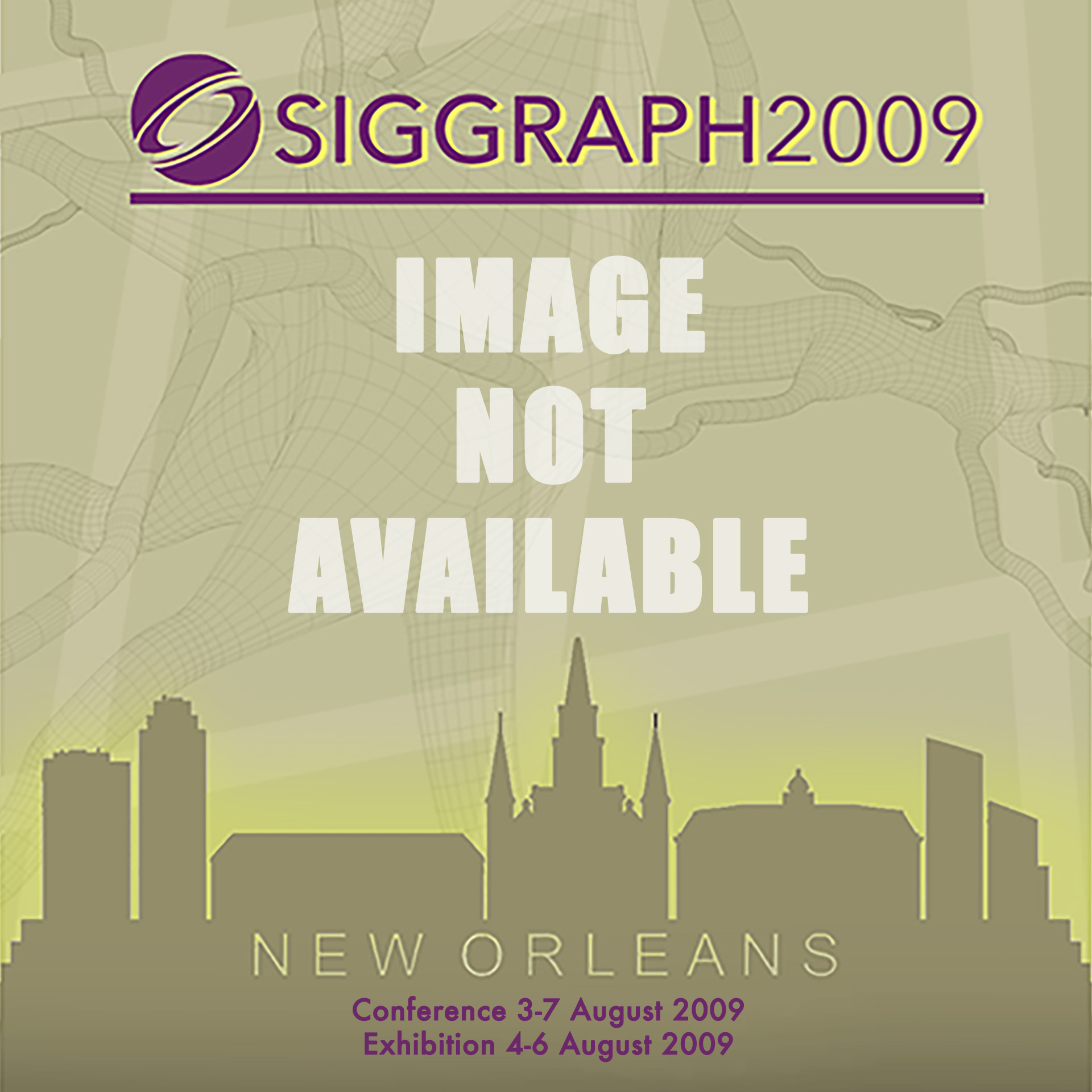“Research Challenge 2009”
Conference:
Experience Type(s):
Competition Type:
Title:
- Research Challenge 2009
Competition Participants/Winners:
- Younghui Kim
- Sanghwa Hong
- Jaeseok So
- Hyuna Choi
- Soomi Jeong
- Hyunhee Kim
- Jeremy Long
- Anthony Estey
- David Bartle
- Sven C. Olsen
- Amy Gooch
- Dan Mikesell
- Matt Canada
- Felicia Collum
- David Martinez
- Chris Ozone
- Toija Riggins
- Aaron Yaw
- Kara Bohnenstiel
- Alexandre François
- Ian Altgilbers
- Jessie Berlin
- Alissa Cooper
- Eric Gustavson
- Greg Harris
- Matthew Knowles
- Huy Ngu
- Gregory Scott
- Rashmi Singhal
- Eric Stewart
- Daniel Thayer
- Lindsay Verola
- Sonny Zhao
Description:
SIGGRAPH 2009 introduces the SIGGRAPH Annual Research Challenge competition. Individuals and teams develop innovative solutions to a challenge problem, demonstrating their creativity, design, and execution skills. Selected finalists will present their work to a panel of distinguished judges in a public session in competition for final awards.
Other Information:
The Challenge
All animals, including people, experience the world in different ways. Every animal has unique sensory equipment and a unique way of processing the information it receives. Some animals sense things that people are unaware of, and others sense the same things people do but interpret them differently. For example, bees can see in the ultraviolet range, some starfish have “eyes” all over their bodies, flies have multi-faceted vision, and sharks and some birds can sense electromagnetic fields.
The SIGGRAPH 2009 Research Challenge problem is to choose a specific animal, or a specific animal’s sense, and develop a system that will enable a person to experience the physical or social world as that animal does.
The Finalists

The P-War: Interactive Social Game Based on Dogs’ Territorial Behaviors
Dogs have been human companions for ages, and we humans often assume that we understand them better than we actually do. P-War is an experimental game that uses GPS and mobile technologies that allows players to experience dog social dynamics from a dog’s point of view while physically interacting with each other and exploring territories they mark as dogs would, using the custom-designed P-War mobile screen interface.
Younghui Kim
Sanghwa Hong
Jaeseok So
Hyuna Choi
Soomi Jeong
Hyunhee Kim
Hongik University
Catalyst: Seeing Through the Eyes of a Cat
This simulation of the cat visual system is based on neuroscientific research. It illustrates four of the major differences between the cat and human visual systems, and maps those contrasts into a space that can be readily observed by humans. This project also includes an educational game that is designed to teach players about how their vision differs from cat vision.
Jeremy Long
Anthony Estey
David Bartle
Sven Olsen
Amy Gooch
University of Victoria

Project: Prey
Project: Prey simulates the auditory and visual experiences of animals of prey, including (among others) rabbits, deer, and squirrels. It allows human users to experience “hearing” with two ears that rotate 180 degrees, independently of each other. The project also provides users an opporutnity to “see” with monocular vision. Both experiences are markedly different from the auditory and visual capabilities of human beings.
Dan Mikesell
City University of New York, New York City College of Technology
Matt Canada
Felicia Collum
David Martinez
Chris Ozone
Toija Riggins
Aaron Yaw
Kara Bohnenstiel
New York City College of Technology

An Ant’s Life
In this first person interactive game, players experience the world as members of an ant colony, from hatching through successive life phases in and around the nest. The game’s interface maps the antÕs dominant senses (smell, taste, and touch) to a first-person interactive audiovisual display, conveying a localized and qualitative perception of the environment. The game takes place in a fully accessible and interactive simulation of the colony and its environment, populated by other ants and critters. As the ants mature, they grow larger and stronger, their senses become more refined, and their range increases.
Alexandre Francois
Ian Altgilbers
Jessie Berlin
Alissa Cooper
Eric Gustavson
Greg Harris
Matthew Knowles
Huy Ngu
Gregory Scott
Rashmi Singhal
Eric Stewart
Daniel Thayer
Lindsay Verola
Sonny Zhao
Tufts University





